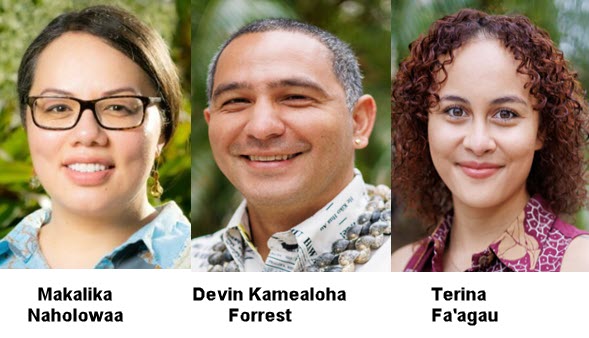Abstract
Excerpted From: Makalika Naholowaa, Devin Kamealoha Forrest and Terina Fa'agau, The Pursuit of Health and Well-being: 45 Years of Native Hawaiian Rights, 27-OCT Hawaii Bar Journal 4 (October, 2023) (32 Footnotes) (Full Document)

Voiced to the delegates of the 1978 Constitutional Convention, this dream of Frenchy DeSoto and the Hawaiian people to achieve and maintain well-being for their young and future generations continues to resound forcefully with the lhui today. It is no surprise, as well-being for the people is the ultimate end goal of society and the objectives of law, politics, and business, not to mention medicine. With that understanding in the 1970s, Hawaiian communities took to the streets and the State Capitol advocating for law that fulfilled its purpose and enabled Hawaiian well-being. In that time, the lhui achieved historic success with several amendments to the Hawai'i Constitution, including article XII, § 7 regarding the protection of traditional and customary Hawaiian practices; article XII, § 1 requiring that the state sufficiently fund the Department of Hawaiian Home Lands (“DHHL”); and article XII, § 5 creating the Office of Hawaiian Affairs (“OHA”), among numerous other amendments.
Each of these three amendments was advocated with a specific understanding that Hawaiian culture is fundamental to Native Hawaiian well-being, and that culture is inextricably intertwined and dependent upon pilina (relationship) with and pono (right) stewardship of the land and natural environment. Nevertheless, despite DeSoto and her generation's numerous successes now enshrined in the Hawai'i Constitution, Native Hawaiian well-being is persistently under pressure, in meaningful part due to government and state law's treatment of Native Hawaiian rights as an objective that must be balanced against other interests and therefore constantly compromised. These compromises have contributed to an increasing diaspora with more Hawaiians now living outside Hawai'i than on the islands and to a parade of litigation with Hawaiians steadfastly, yet too often unsuccessfully, on the other side of threats to sacred sites and natural resources like aquifers, wetlands, and streams.
This article examines Knaka Maoli well-being, the social change and legal advocacy to protect Knaka leading up to the 1978 constitutional convention, and certain major subsequent legal developments impacting the law's effectiveness in achieving the vision of Hawaiian advocates and allies at the convention. This article specifically examines the law that has developed regarding sufficient funding for DHHL and protection of traditional and customary practices, including the natural environment those practices depend upon. Together, the promise of these two amendments was the ability for Hawaiian families and communities to maintain stable residence in Hawaii and live according to Hawaiian lifeways, as Hawaiians did since time immemorial prior to colonization. The purpose of these goals was to enable health and wellness for Hawaiian communities. The lived experience for Hawaiian people relying on these amendments, however, has been filled with challenges.
[. . .]
For post-overthrow Hawai'i, the 1978 Constitutional Convention was a positive and promising milestone for the advancement of Native Hawaiian justice and well-being. As detailed above, Native Hawaiian advocates at the convention sought to articulate and protect what Knaka Maoli have known since time immemorial--that the well-being of Knaka is intrinsically tied to their traditional practices that, in turn, are inextricably tied to their pilina and kinship to the environment.
At the convention, to ensure that well-being could be achieved, Native Hawaiians and their allies secured protections for the benefit of all Hawai'i and all who call it home. Realizing the promise of these protections, however, is a work in progress, already marked by deep compromises in Hawai'i's constitutional law.
As the third generation of people in Hawai'i--from all sectors, including cultural practitioners, community leaders, legal professionals, public officials, and industry--take on the kuleana of stewarding the land and the law since the convention, the vision and goals of our kupuna from the 1970s and beyond must anchor the work. In that history is a call for change: a change from bitter disputes and insufficient compromises to approaches and law allowing for our collective wellness, grounded in Hawaiian values that have always distinctively served and distinguished our state. We can do this if we embrace the learnings of the last forty-five years, come together as a society, and recognize that this is what is good for all Hawai'i.
The authors are attorneys at the Native Hawaiian Legal Corporation (“NHLC”).
In this article, the indigenous people of Hawai'i are interchangeably referred to as “Hawaiian,” “Native Hawaiian,” “Knaka Maoli” and “Kanaka.” The Native Hawaiian people as a nation are referred to as the “lhui.”


